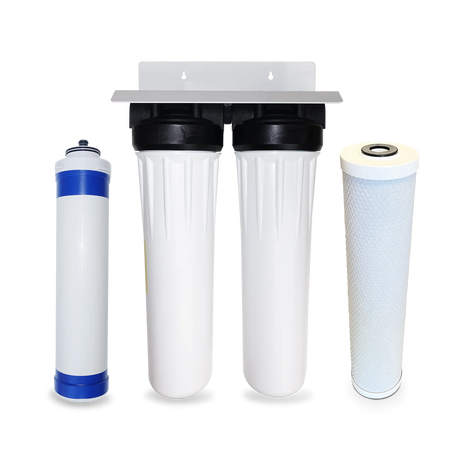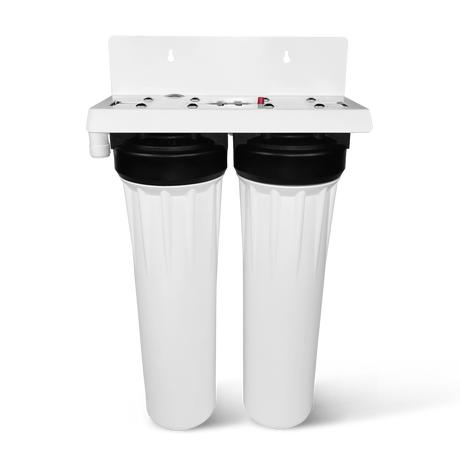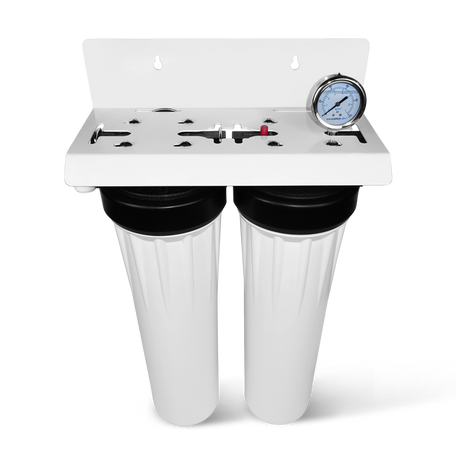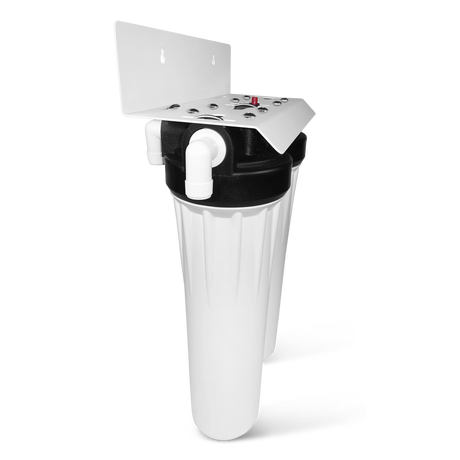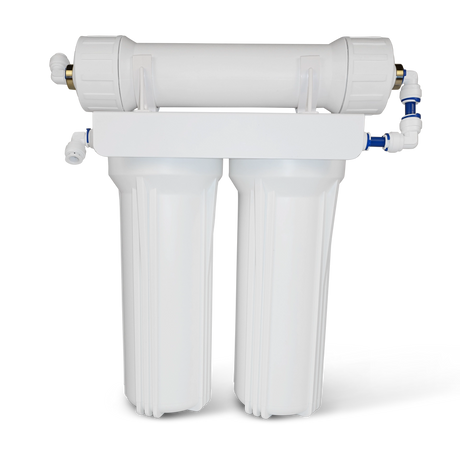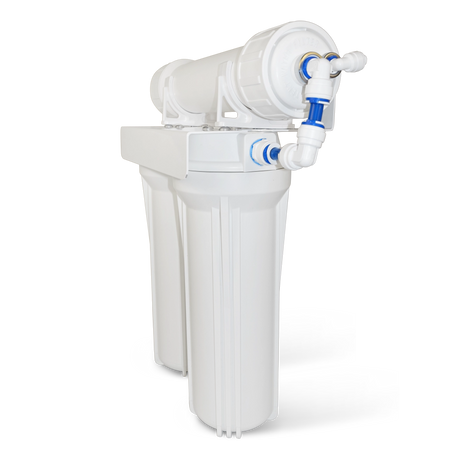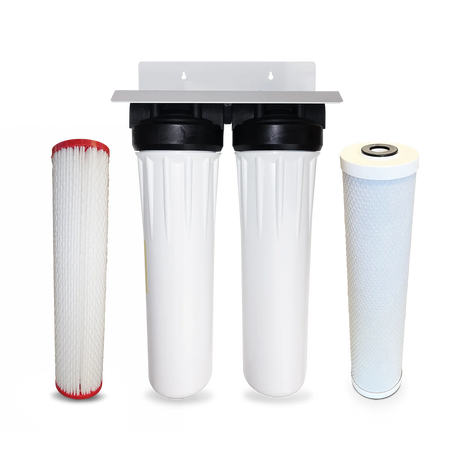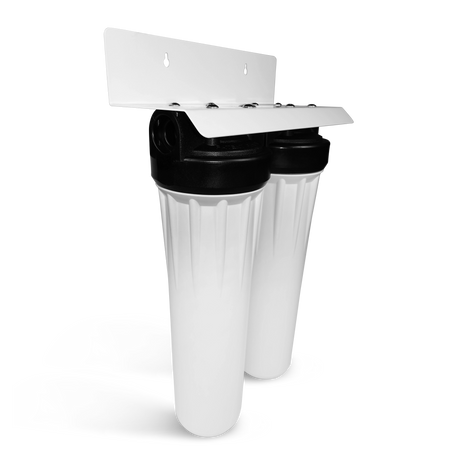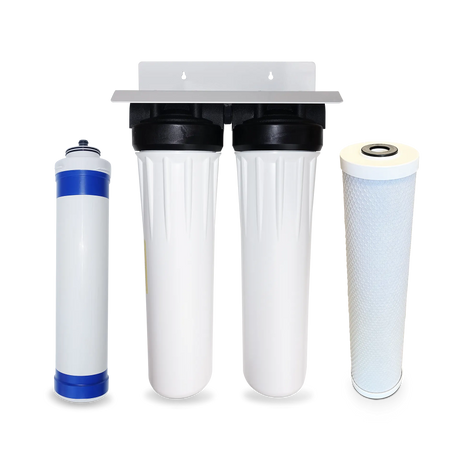Invisible Threats: Understanding and Eliminating Bacteria and Viruses in Your Drinking Water
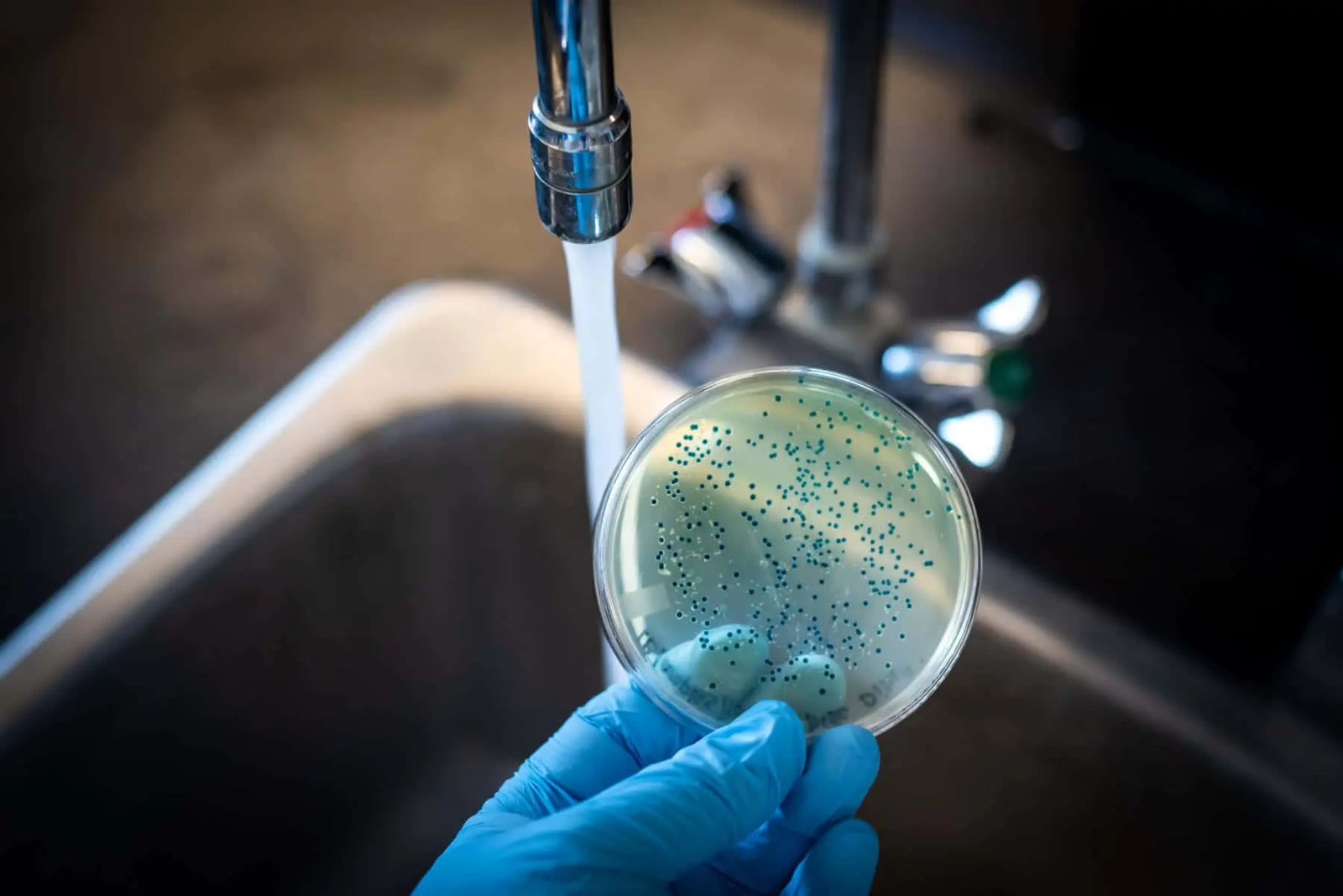
When you look through a clear glass filled with tap water, what do you see? Probably nothing but a transparent liquid, perhaps with a few air bubbles causing a slight cloudiness. This water might appear clean and ready to drink. However, if your water isn't adequately filtered or purified, even the clearest water could harbor invisible contaminants, including harmful bacteria and viruses.
These microscopic organisms pose significant health risks, potentially causing various diseases and health problems. While bacterial and viral contamination is more common in well water, even municipal water sources aren't immune to these threats. In this comprehensive guide, we'll dive deep into understanding these invisible dangers and how to protect your household effectively.
The Hidden Menace: Bacteria and Viruses Lurking in Your Water Supply
Bacteria, viruses, and parasites are invisible threats that can't be detected by sight, smell, or taste. You might be consuming them without realizing it. The only reliable way to identify their presence is through professional water testing.
Common microorganisms found in contaminated water include:
- Bacteria: Coliforms, E. coli, Shigella, Vibrio, Salmonella, Legionella, Enterococci
- Enteroviruses: Polioviruses, Echoviruses, Coxsackieviruses
- Viruses: Norwalk virus, Rotaviruses
- Protozoans/Parasites: Entamoeba, Giardia, and Cryptosporidium
Of these, Giardia and Cryptosporidium are the most common causes of waterborne illnesses in the United States, primarily due to their resistance to standard disinfection methods. These parasites can cause severe gastrointestinal issues, especially in individuals with weakened immune systems.
It's crucial to understand that even if you have a "strong stomach" or a healthy immune system, it's not enough to protect you from the hazards that bacteria in water may cause. Unfiltered water can be particularly harmful to vulnerable populations, including:
- Those on medication
- Pregnant women
- The elderly
- Children
These groups often have immune systems that are not strong enough to fight off dangerous microorganisms effectively.
Key Takeaway: The best protection against waterborne bacteria is a proper filtration system that effectively removes bacteria, viruses, and cysts.
Municipal Water: Is It Really Safe from Bacterial Contamination?
Many people assume that if they receive their water from a municipal source, it's automatically safe from bacterial contamination. While municipal water is generally safer than untreated sources, it's not without its risks.
Public water suppliers are required by the Environmental Protection Agency (EPA) to regularly test for coliform bacteria. However, the frequency of these tests varies depending on the supplier and the population served. Suppliers are required to notify the public if the water supply doesn't meet EPA standards, but this system isn't foolproof.
Here are some key points to consider about municipal water:
Chlorine Disinfection: Municipal water providers typically use chlorine to disinfect water. While effective against most waterborne pathogens, including those that cause typhoid fever, dysentery, cholera, and Legionnaires' disease, chlorine disinfection has its drawbacks:
- Chlorine can cause heavy metals, like lead, to leach into the water from aging pipes.
- The distinctive taste and odor of chlorine are unpleasant for many people.
- There's a risk of inhaling chloroform gas created in shower steam from chlorinated water.
Resistant Organisms: Some parasites, like Giardia and Cryptosporidium, can be resistant to chlorine disinfection.
Infrastructure Issues: Even if water leaves the treatment plant clean, it can become contaminated in the distribution system due to aging infrastructure or other issues.
Infrequent Testing: While suppliers do test for bacteria, it's impossible to test 100% of the water 100% of the time. Contamination can occur between testing periods.For these reasons, it's highly recommended to use a filter capable of reducing chlorine and removing bacteria, viruses, and cysts, even if you receive water from a municipal source. This added layer of protection ensures that your water is safe and pleasant to drink.
Well Water: A Potential Breeding Ground for Bacteria?
Private wells, springs, and other non-municipal water sources aren't subject to the same testing requirements as public water supplies. It's the owner's responsibility to ensure water safety through regular testing and proper maintenance.
Here are some crucial points about well water and bacterial contamination:
- Regular Testing is Crucial: At a minimum, well water should be tested annually for total coliform bacteria. More frequent testing may be necessary if you notice changes in your water's taste, odor, or appearance.
- Indicator Bacteria: The presence of total coliform bacteria suggests surface contamination has gotten into the water and that disease-causing microorganisms may be present.
- Disinfection Methods: If bacteria are found, disinfection methods like chlorination can kill coliform bacteria and most disease-causing microorganisms. However, this is often a temporary solution.
- Other Contaminants: Well water is also susceptible to other issues beyond bacterial contamination, such as mineral content, pH imbalances, and chemical contamination from nearby agricultural or industrial activities.
Remember: Even if your well water tests safe once, it doesn't guarantee continued safety. Regular testing and proper filtration are crucial for maintaining water quality. It's strongly recommended to have adequate water filtration for any water you drink or use from a well, spring, or other non-municipal source.
Choosing the Right Water Filter: Your Defense Against Bacteria and Viruses
When it comes to water filtration systems, not all are created equal. Some are highly effective at removing bacteria and viruses, while others may fall short. Let's explore the most effective types of water filters for eliminating these microorganisms:
1. Ultrafiltration Systems
Ultrafiltration (UF) is the latest advancement in water purification technology. These systems offer several advantages:
- Remove over 99.9% of bacteria, viruses, and parasites like Giardia and Cryptosporidium
- Produce great-tasting, safe water
- Feature cleanable membranes, reducing long-term costs
- Operate without electricity or the need for a storage tank
- Allow for easy membrane cleaning by simply turning a valve
Ultrafiltration systems are highly effective and efficient, making them an excellent choice for comprehensive water purification.
2. Absolute Charged Nanofiber Filters
These advanced filters use a "charged" high zeta potential to attract ultrafine contaminants. They offer:
- Removal of more than 99.99% of viruses and bacteria
- Elimination of over 99.95% of cysts
- Effective filtration down to 0.5 microns
- High efficiency in removing pathogenic bacteria and cysts
The small micron rating and electrostatic charge make these filters highly effective at capturing even the tiniest contaminants.
3. Ultraviolet (UV) or Ozone Purification
While effective at killing bacteria, these methods have some limitations:
- Kill bacteria but don't physically remove them from water
- Leave bacterial remnants in the water
- Require significant electricity to operate
- May not be effective against all types of microorganisms
UV and ozone purification can be useful as part of a multi-stage filtration system but may not be sufficient on their own.
4. Reverse Osmosis Systems
Reverse osmosis can remove bacteria, but it's important to note some caveats:
- Systems are rarely certified specifically for bacterial removal
- Membrane defects can allow bacteria to pass through
- Bacteria may move around o-ring seals or attach to membranes
- Regular maintenance and membrane replacement are crucial for effectiveness
While reverse osmosis can be highly effective when properly maintained, it's important to verify that a specific system is certified for bacterial removal if this is a primary concern.
Top 6 Water Filters for Removing Bacteria and Viruses
Now that we understand the different types of filtration systems, let's look at some specific products that excel in removing bacteria and viruses from your water.
Whole House Water Filters
1. PS-1000 Ultrafiltration System
Best for: Overall bacteria and virus removal
- Removes bacteria, viruses, and parasites with over 99.9% efficiency
- 8 gallon per minute flow rate, suitable for most homes
- Cleanable membrane lasting 3-5 years, reducing long-term costs
- No storage tank or electricity required
- Easy maintenance: simply turn a valve to flush the membrane
Why it's worth buying: The PS-1000 offers top-tier filtration with the added benefit of a long-lasting, easy-to-clean membrane. This translates to lower maintenance costs and consistent water quality over time.
2. PS-2000PB Ultrafiltration System with Catalytic Carbon Filter
Best for: Comprehensive contaminant removal, including lead
- Two-stage filtration: ultrafiltration membrane plus special carbon post-filter
- Removes bacteria, viruses, lead (both soluble and particulate), chlorine, chloramine, VOCs, PFOA, PFOS, and more
- 8 gallon per minute flow rate
- Cleanable ultrafiltration membrane
- Annual replacement required for the carbon post-filter
Why it's worth buying: The PS-2000PB system offers comprehensive protection against a wide range of contaminants, including both biological and chemical threats. It's particularly valuable for households concerned about lead contamination.
3. PS-2000S Ultrafiltration System with Sediment Pre-filter
Best for: Water with high sediment content
- Removes over 99.9999% of bacteria, 99.99% of viruses, and 99.95% of cysts
- Sediment pre-filter protects the ultrafiltration membrane from clogging
- 8 gallon per minute flow rate
- Easy-to-clean design with flushable membrane
- Annual replacement required for the sediment pre-filter
Why it's worth buying: If your water has high sediment content, the PS-2000S system ensures that your ultrafiltration membrane remains effective for longer, providing consistent water quality and potentially reducing long-term costs.
4. PS-2000C Ultrafiltration System with Anti-Scale Carbon Filter
Best for: Chemical removal and scale prevention
- Removes bacteria, viruses, chlorine, chloramine, THMs, VOCs, MTBE, and more
- Includes scale inhibition for hard water
- 8 gallon per minute flow rate
- Cleanable ultrafiltration membrane
- Annual replacement required for the carbon post-filter
Why it's worth buying: The PS-2000C system is ideal for households dealing with both microbiological and chemical contaminants, as well as hard water issues. The scale inhibition feature can help protect your plumbing and appliances.
5. BG-202BIV Two Stage Whole House Bacteria Water Filtration System
Best for: Budget-conscious buyers seeking comprehensive filtration
- 0.5 micron absolute rating "charged" nanofiber cartridge
- Removes bacteria, cryptosporidium, giardia, parasites, endotoxins, sediment, iron, manganese, and various chemicals
- Includes scale inhibitor for hard water
- 5 micron coconut shell carbon cartridge for chemical removal
Why it's worth buying: The BG-202BIV system offers a good balance of performance and affordability, providing comprehensive filtration without the higher cost of some ultrafiltration systems.
Under Sink Water Filter
6. PS-PURUF Ultrafiltration Drinking Water System
Best for: Point-of-use bacterial removal with high-quality filtration
- Removes bacteria, viruses, parasites, lead, and various chemical contaminants
- No storage tank required, reducing bacterial growth risk
- Produces water on demand (up to 1.5 gallons per minute)
- Cleanable membrane with 2-3 year lifespan
- Includes high capacity coconut shell carbon block cartridges for chemical removal
Why it's worth buying: The PS-PURUF system provides comprehensive filtration at the point of use, ideal for ensuring the highest quality drinking water. The lack of a storage tank and the cleanable membrane make it a low-maintenance, space-efficient option.
Maintaining Your Water Filtration System
Choosing the right water filter is only the first step in ensuring clean, safe drinking water. Proper maintenance is crucial for the continued effectiveness of your system. Here are some key maintenance tips:
- Regular Filter Changes: Replace filters according to the manufacturer's recommendations. This is typically annually for most carbon filters and pre-filters.
- Membrane Cleaning: For systems with cleanable membranes, flush them regularly as directed. This helps maintain efficiency and extends the life of the membrane.
- Water Testing: Periodically test your water to ensure your filtration system is working effectively. This is particularly important for well water users.
- System Inspection: Regularly inspect your filtration system for any signs of wear, leaks, or damage. Address any issues promptly to prevent system failure.
- Sanitization: For systems with storage tanks or extensive piping, periodic sanitization may be necessary to prevent bacterial growth.
- Professional Servicing: Consider having your system professionally serviced annually, especially for more complex setups like whole-house filtration systems.
- Monitor Water Pressure: A sudden drop in water pressure could indicate a clogged filter or other issues that need attention.
- Keep Records: Maintain a log of filter changes, cleaning schedules, and any issues encountered. This can help you track your system's performance over time.
Remember, a well-maintained filtration system not only ensures the safety of your drinking water but can also extend the life of your appliances and plumbing by reducing scale buildup and sediment accumulation.
Understanding Water Quality Reports
Whether you use municipal water or have a private well, understanding your water quality is crucial in choosing and maintaining the right filtration system. Here's how to interpret water quality information:
For Municipal Water Users:
- Consumer Confidence Report (CCR): Also known as an annual water quality report, this document is provided by your water utility and details the quality of your local drinking water.
- Contaminant Levels: Pay attention to the levels of contaminants listed and how they compare to the EPA's Maximum Contaminant Levels (MCLs).
- Source of Water: Understanding where your water comes from (surface water, groundwater, etc.) can help you anticipate potential contaminants.
- Treatment Methods: Knowing how your water is treated can help you decide on additional filtration needs.
For Well Water Users:
- Regular Testing: The EPA recommends testing well water at least once a year for total coliform bacteria, nitrates, total dissolved solids, and pH levels.
- Comprehensive Testing: Every 3-5 years, consider a more comprehensive test that includes additional contaminants like heavy metals, pesticides, and other organic compounds.
- Interpreting Results: Compare your test results to the EPA's drinking water standards. If any contaminants exceed these levels, additional filtration may be necessary.
The Environmental Impact of Water Filtration
While ensuring clean, safe drinking water is crucial, it's also important to consider the environmental impact of water filtration systems. Here are some factors to keep in mind:
- Water Waste: Some systems, particularly reverse osmosis, can produce significant amounts of wastewater. Look for systems with high efficiency ratios or consider ways to reuse the wastewater.
- Filter Disposal: Regular filter changes mean disposing of used filters. Look for biodegradable options or recycling programs for used filters.
- Energy Consumption: Some systems require electricity to operate. Consider the energy efficiency of the system and look for Energy Star certified options where available.
- Plastic Usage: Many filtration systems use plastic components. Look for durable, long-lasting systems to minimize plastic waste.
- Chemical Use: Some maintenance procedures may involve chemicals. Always follow proper disposal guidelines for any cleaning or maintenance solutions.
By considering these factors, you can choose a filtration system that not only provides clean water but also aligns with environmental sustainability goals.
Conclusion: Investing in Your Health and Peace of Mind
The presence of bacteria and viruses in your water supply is a serious concern that shouldn't be overlooked. While municipal water treatment and regular well maintenance can provide a baseline of safety, additional filtration is often necessary to ensure the highest quality of drinking water for your household.
By investing in a high-quality water filtration system, you're not just improving the taste and appearance of your water – you're protecting your family's health. Whether you choose a whole-house system or a point-of-use filter, make sure it's capable of removing bacteria, viruses, and other harmful contaminants.
Remember these key points:
- Regular testing is crucial, especially for well water users.
- Not all filters are created equal – choose one that specifically targets bacteria and viruses if these are a concern.
- Proper maintenance is essential for the continued effectiveness of your filtration system.
- Consider both your specific water quality needs and environmental factors when choosing a system.
- Stay informed about your water quality through regular reports or testing.
Clean, safe water is not a luxury – it's a necessity for a healthy life. By understanding the potential threats in your water supply and taking proactive steps to address them, you can ensure that every glass of water you drink is as pure and safe as possible.
Remember, the best filtration system for your home depends on your specific water quality and needs. Consider getting your water tested and consult with a water treatment professional to find the perfect solution for your household. With the right system in place, you can enjoy peace of mind knowing that your water is clean, safe, and delicious.


